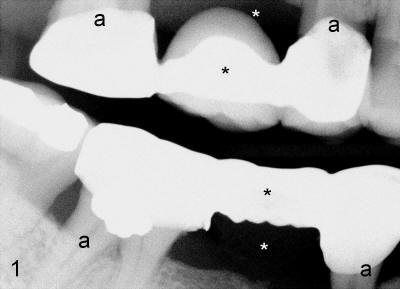
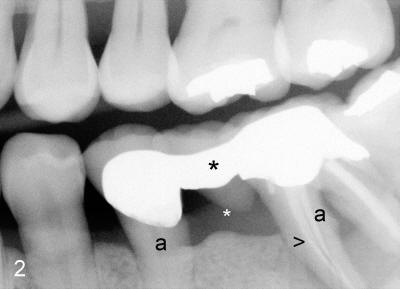
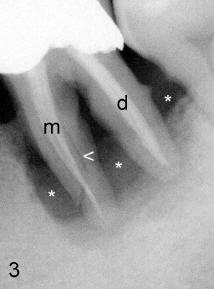
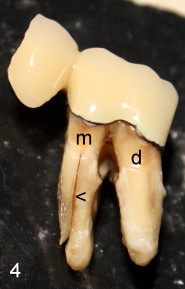
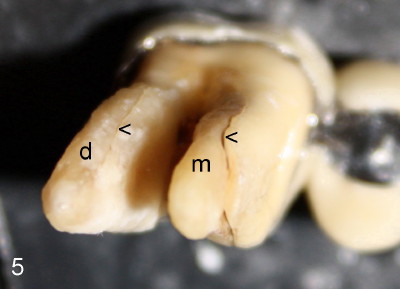
 |
 |
|
 |
 |
 |
Drawback of Bridge (4): Root Fracture in supporting tooth after Root Canal
Mr. Wang has lost 3 molars (Fig.1,2: white *), which are replaced by 3 bridges (black *). Each bridge is supported by 2 abutment teeth (a). The 2 bridges in Fig.1 have been used for about 20 years, whereas the one in Fig.2 for less than 10 years. Mr. Wang complains about pain around the latter area. Can you notice that one of the 6 abutment teeth (Fig.2: >) is different from the rest?
That tooth has had root canal! The tooth has 2 roots (Fig.3: m, d). M stands for mesial (Latin), close to the midline of the jaw; D: distal, away from the midline. Bone around these two roots is gone (*), suggesting severe infection. Why? Because the mesial root apparently has a fracture line (<).
The vertical root fracture is confirmed when two units of the bridge are removed (Fig.4). When the bridge is flipped over, a fine fracture line is visible in the distal root (Fig.5). Now Mr. Wang has no choice other than two implants.
Root fracture can occur in single unit crown/tooth after root canal. Root fracture happens more often (probably 1.5 times) associated with the bridge supporting teeth. When we lose one tooth, we usually use two supporting teeth to make a 3-unit bridge. Each of supporting teeth sustains 1.5 times more chewing force. The chance of root fracture should be 1.5 time more likely than a single-unit crown/tooth. It seems to be a very bad idea to get a bridge if one of supporting teeth has had root canal. We may lose much more in the end: time, money and teeth.
Xin Wei, DDS, PhD, MS 1st edition 09/12/2011, last revision 09/28/2012